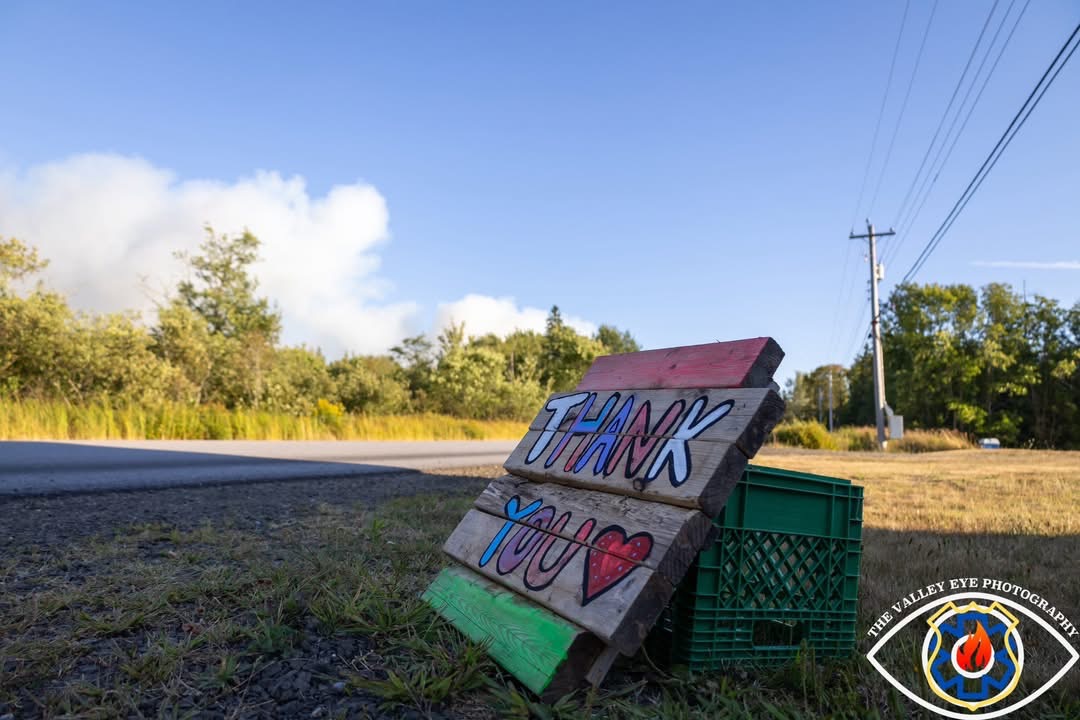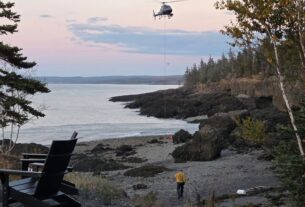Across the Annapolis Valley, our volunteer fire departments are the backbone to our communities, and we know they will always be there when they are called, no matter where they are needed.
The Long Lake Wildfire in West Dalhousie proved just that. While it may not be historic in size, it has certainly been historic in nature, bringing in a plethora of out-of-area assistance.
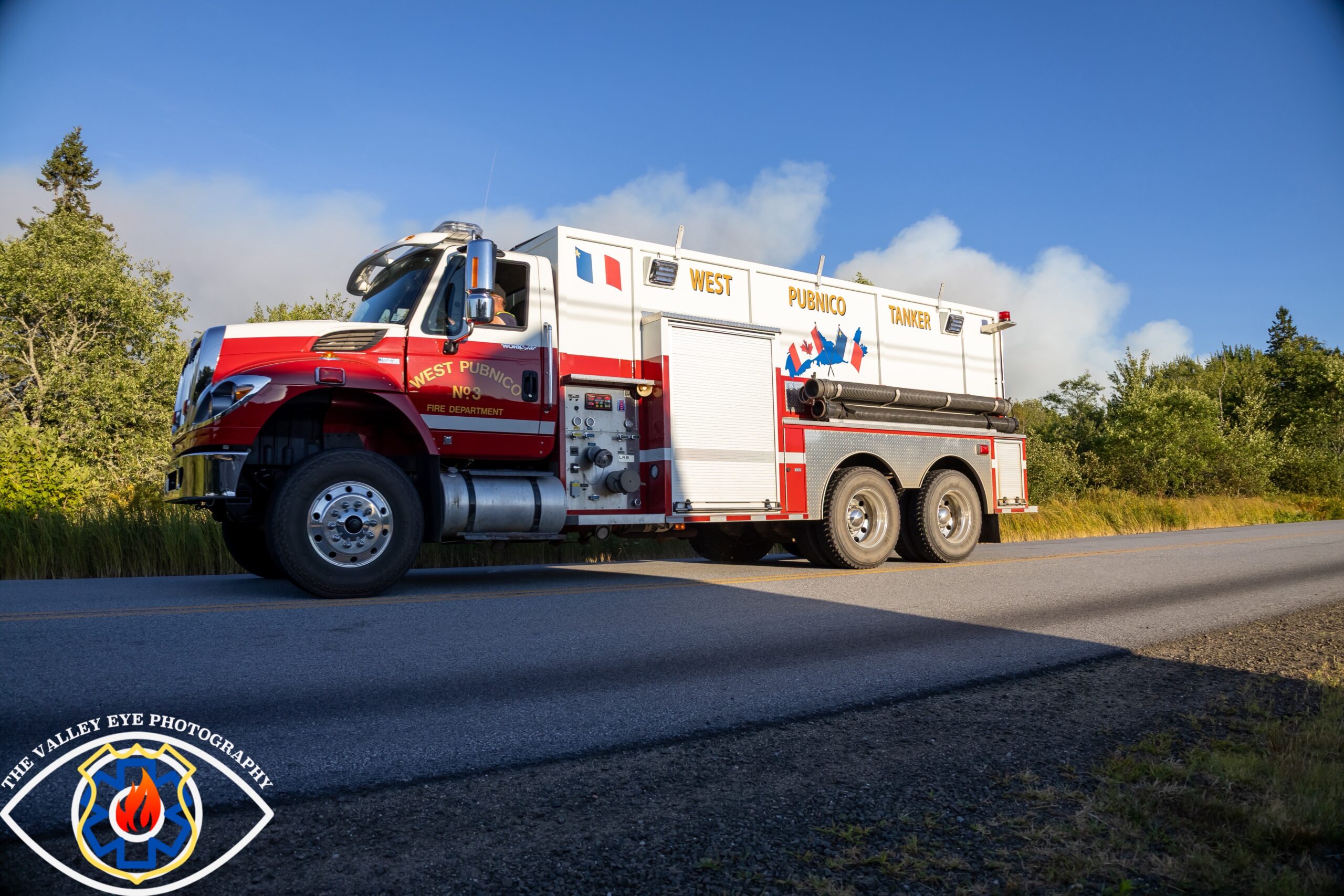
Covering approximately 84 square kilometres and burning an area of about 8,468 hectares, the fire remains active with the Department of Natural Resources, out of province resources and aircraft still battling active fire within the “Being Held” perimeter.
Even though volunteer firefighters have been released from the scene, there is no doubt their efforts, particularly focused on protecting residential properties, have allowed other agencies to work on repairing crucial infrastructure, bringing all evacuees back to the heart of their community.
Despite many residents losing their homes and others suffering property damage, firefighters soaked in thousands of working hours and significant planning, which kept dozens of structures from going up in flames.
This work wouldn’t have been possible without the collaboration of all firefighters and agencies who assisted and helped wherever they were needed. It was nothing short of remarkable.
“You’ll never understand how big that actually was, with all the different agencies that needed to be organized. It was amazing to watch and see it grow every day. It’s hard to explain to someone who doesn’t know how many different departments and entities were there.” Stated Bridgetown Fire Chief, Randy Sheridan.
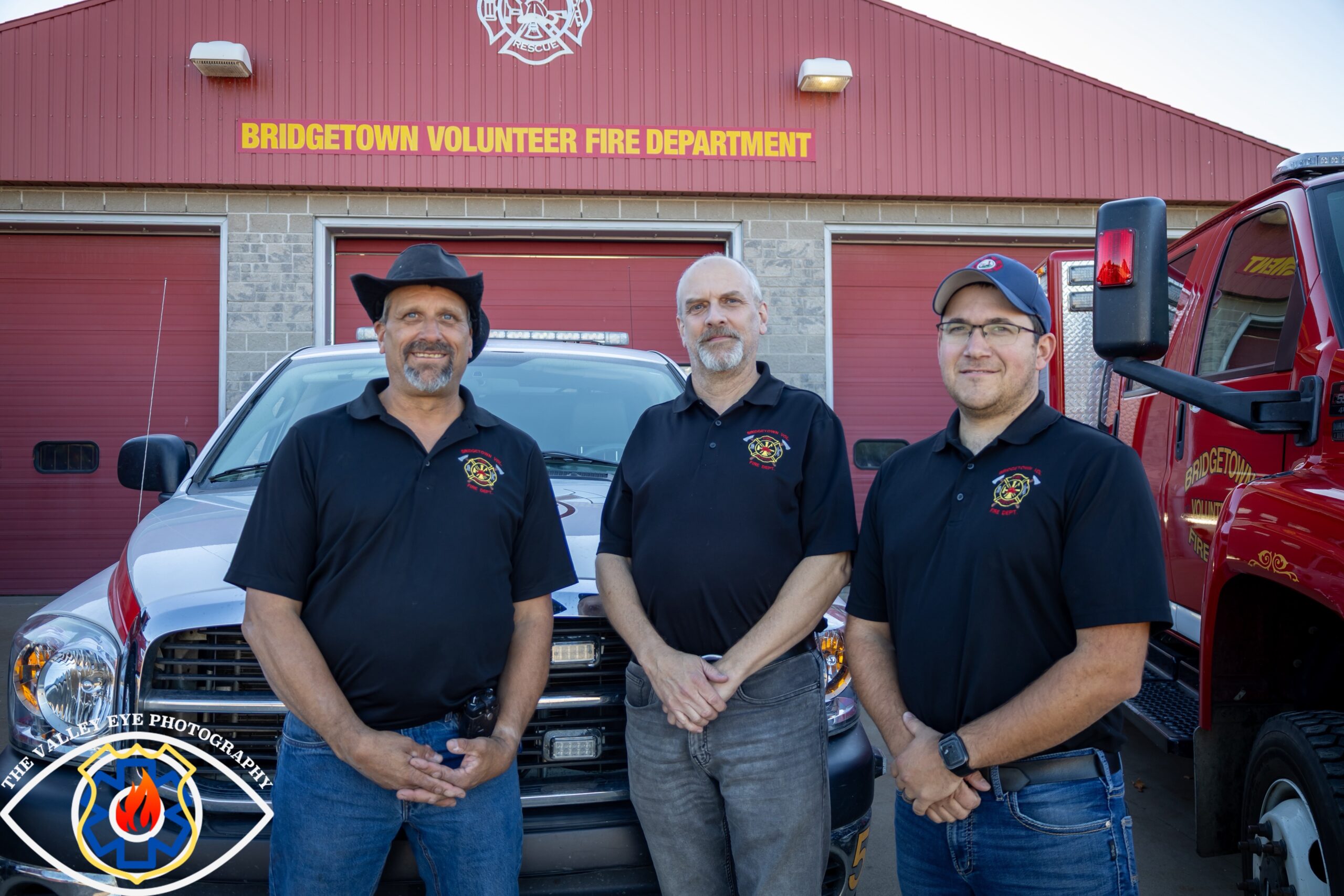
(From Right to Left: Bridgetown Chief, Randy Sheridan, Bridgetown Deputy Chief, Robbie Brown & Bridgetown Deputy Chief, Justin Oliver)
Each morning that firefighters arrived, they were required to check in and receive a safety briefing, ensuring departments from out of areas knew the expectations and assignments for the day.
In 2023, the Bridgetown Fire Department celebrated their 150 years of service to the community and, to date, this has been the largest scale operation they’ve been involved in since their inception.
During the Long Lake Wildfire, a total of 77 fire departments assisted with fire efforts on the ground, marking the largest scale fire response in Nova Scotia’s history.
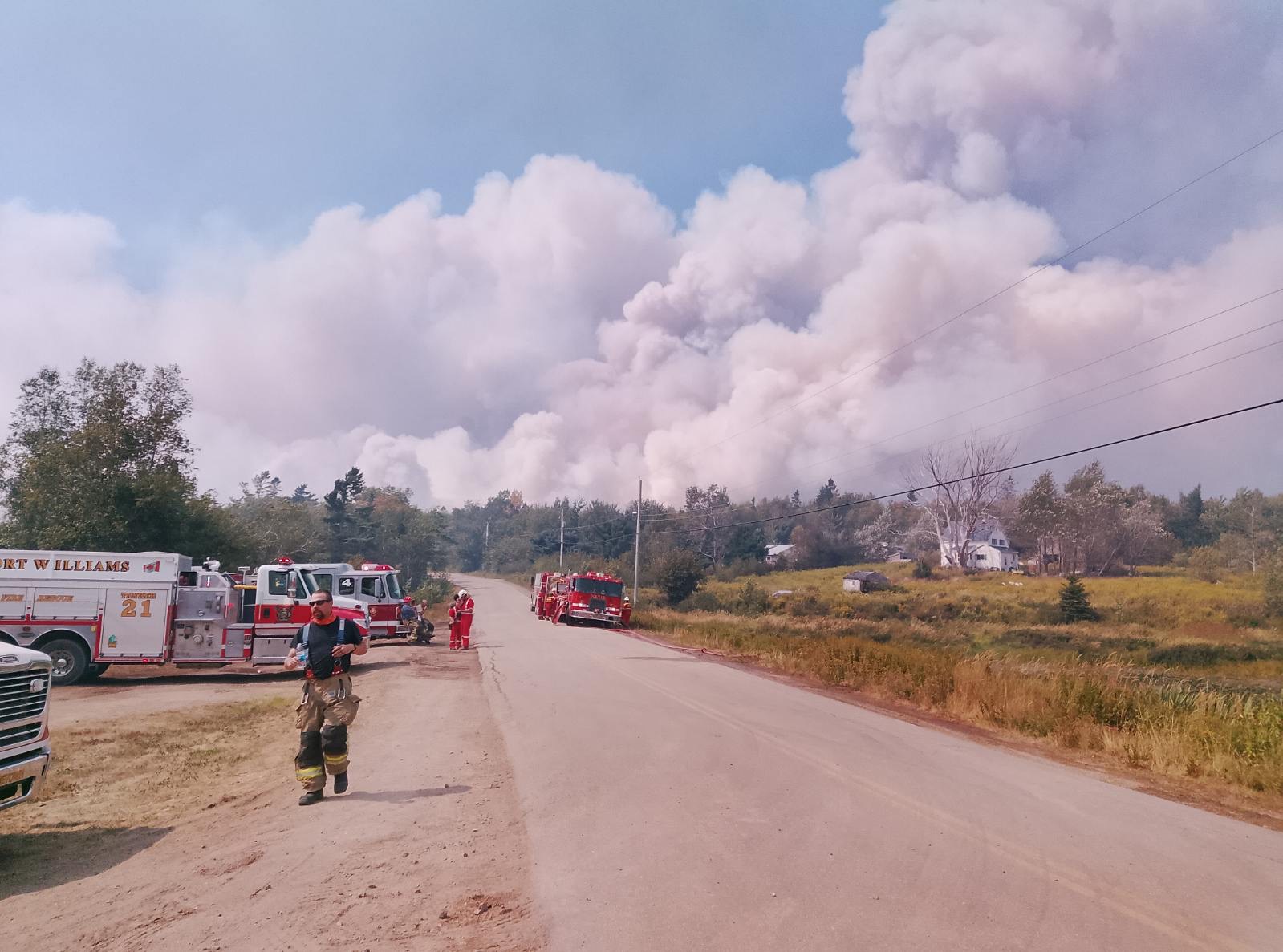
(Photo via Bridgetown Fire Department)
The province, along with fire departments, performed tasks that have never been used in Nova Scotia. Sprinkler protection equipment being installed and dousing millions of gallons of water on vegetation to ultimately reverse drought conditions. These were new techniques here in Nova Scotia that truly paid off.
These assignments were implemented to protect homes and properties. With 88 homes having sprinklers installed, only three of those were lost. Millions and millions of gallons of water were pumped through fire trucks and public work trucks and dumped on many structures that didn’t have sprinklers installed, along with lawns and tree lines that were the barrier between them during the height of the fire.
These efforts in particular brought in firefighters from all across western Nova Scotia. Mutual aid departments came in numbers and supported without hesitation.
Over the course of 33 days that members of the Bridgetown Fire Department were on scene, they accumulated approximately 2,200 working volunteer man hours, and approximately 13,000 kilometres tagged on personal and fire apparatus, while protecting dozens of homes and properties.
On the evening of August 13th, when the fire was reported, it was the start of a long and organized operation that involved many moving parts being strategically placed to protect the community of West Dalhousie.
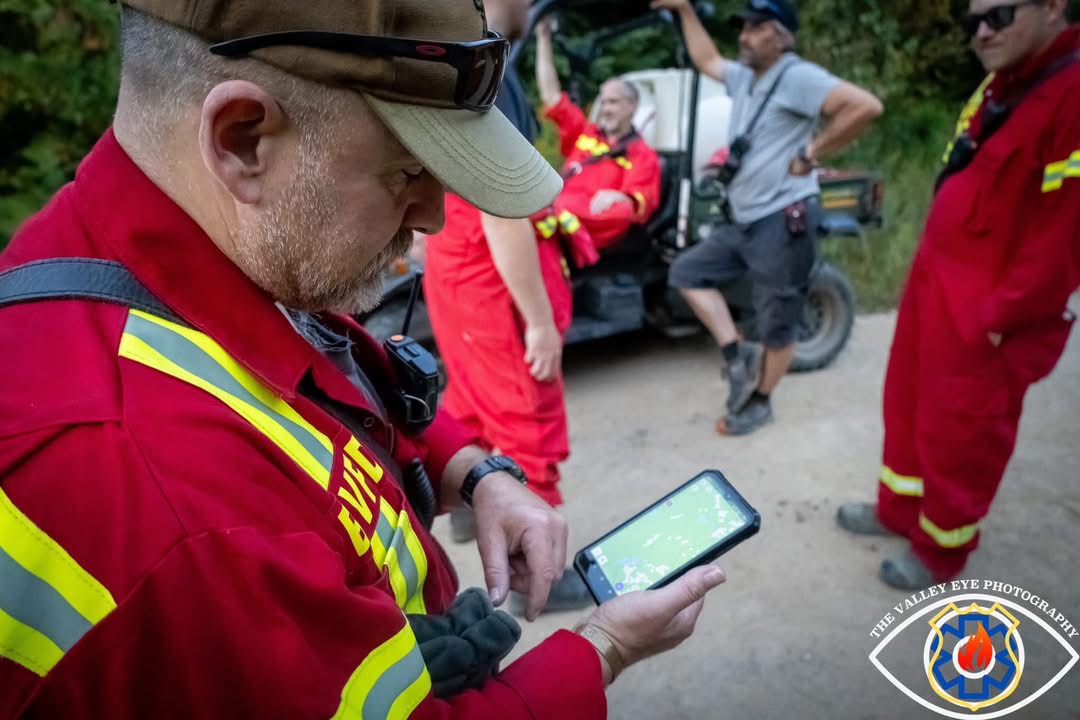
In many scenarios, volunteer firefighters are the first to respond and arrive to many wildfires in rural Nova Scotia. Since the beginning, the Long Lake Wildfire was notably different than any other fire.
The fire was different for a number of reasons. The lack of access by truck, significant drought conditions and the fast-moving intense fire conditions due to low precipitation, which also made water supplies harder to access. Firefighters were draining ponds completely and then refilling them to reuse. One pond on a private property crews drained and refilled 8 times to help save structures. A pond that Deputy Chief Oliver has looked at several times while doing some mental preplanning in case of a fire.
“We knew it was significant from the start, but we didn’t quite know how significant it would become. Every day became a new challenge and development. We just rolled with the punches each time,” stated Deputy Chief Justin Oliver with the Bridgetown Fire Department.
Volunteer fire departments that were called were under the direction of the Department of Emergency Management and were tasked with structural fire protection, soaking down dozens of homes and properties, installing sprinklers on structures and keeping dump tanks topped up along with fuel pumps to ensure homes had water to keep sprinklers running.
Bridgetown Chief Randy Sheridan recounted the first night crews were on scene. It took his firefighters some time to get there by ground, while responding by an off-road vehicle. By the time they did get their eyes on the fire, there was a helicopter on site and the extent of the fuels that were burning resulted in fire crews being pulled out.
During the first two weeks of the incident, it was constantly building on itself. It continued to develop, resulting in a number of resources assisting and different challenges each day.
Oliver expressed his thanks to the dispatchers at Valley Communications who worked over the phone to help with coordinating apparatus when they were needed.
“We based the amount of trucks we needed on what we knew the weather conditions were going to do each day. If we had 15 trucks on Tuesday and the wind was going to increase on Wednesday, we would bring in 10 more trucks,” stated DC Oliver.
Oliver recalled the planning efforts that went into being prepared for fire conditions during their operations of the fire. Paper spreadsheets and keeping track of the capacity of trucks and their abilities while looking at the different tasks spread over a wide area. They ensured they had adequate trucks to fulfill tasks while having additional trucks on hand if something else popped up.
Over the past few years, brush trucks have been introduced across Nova Scotia, with many volunteer fire departments in the Annapolis Valley making the decision to acquire these unique pieces of apparatus.
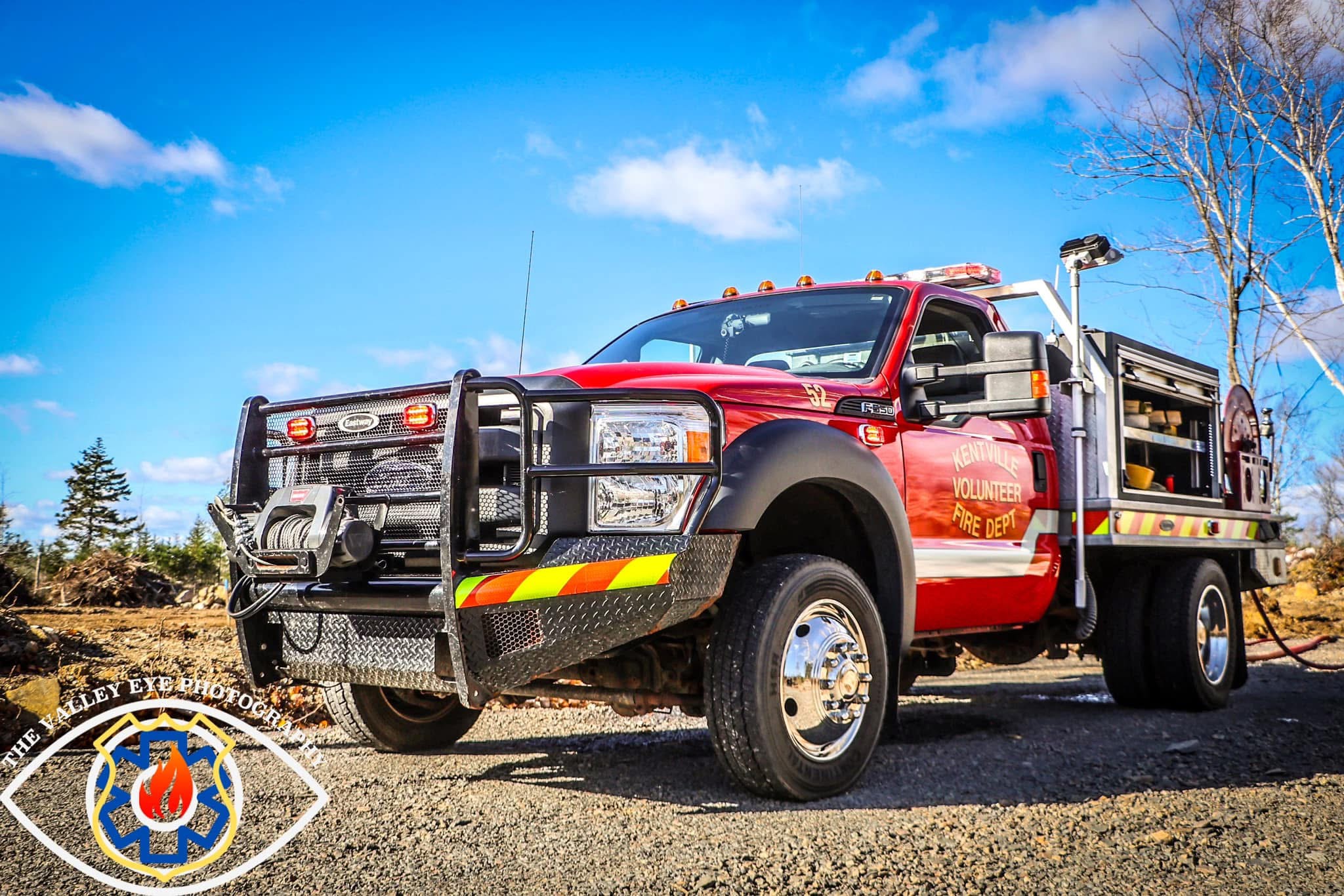
After August 24th, there were at least 2–3 brush trucks on scene putting them to the ultimate test, while Aylesford Fire loaned their truck and Bridgetown utilized a skid unit from the Salvation Army.
With many makeshift roads being made for fire suppression and tight quarters, these new additions were extremely beneficial to aid in the fire efforts.
Many crews from out of area were constantly being bounced around. Eventually, new roads to fight the fire were being named, like New Road, Loader Road and Short Cut Road, helping everyone know where they were going while working together to protect the community of West Dalhousie.
“We had Northfield setting up a water supply, Bridgetown members were helping them and Woods Harbour Shag Harbour was taking their dump tank off their truck. When things weren’t going the way we had wanted, things just came together and happened like that, and it was back up and running. We had never met each other, never trained together, but we worked phenomenally together,” Oliver Proudly stated.
Each day they had three different water sources, filling tankers from volunteer fire departments along with Department of Public Works tractor trailer tankers. Oliver touched on having passed experiences and the knowledge to help problem solve issues that arose with such a complex operation.
Not only were some of the apparatus, crews and techniques used foreign, the accountability system they developed and the member behind it was too. This ended up being a key contributor to the safety of all firefighters while assisting Bridgetown doing structural protection.
“Back in June, we did a mutual aid training with our C-Cans and brought it to Middleton, Annapolis, Nictaux and Port Lorne. We said come on down and will do some SCBA training and everyone can see our equipment. We wanted to offer it up to anyone who wanted to use them. That was the first time Chris was introduced to accountability,” DC Oliver recalled.
On Sunday, August 24th, when fire conditions started to worsen, Justin mentioned implementing accountability to their liaison, Dave Rockwood, who is the provincial Ground Search & Rescue and Fire Coordinator for Department of Emergency Management. It was important to know where their trucks and firefighters were located if the fire was going to spread much larger, and it was quickly put in place, ultimately becoming a vital component to their fire operations.
Bridgetown Firefighter, Chris Rice took the accountability position to a whole other level, keeping tabs on all firefighters and trucks throughout the day by radio at the Bridgetown Station.
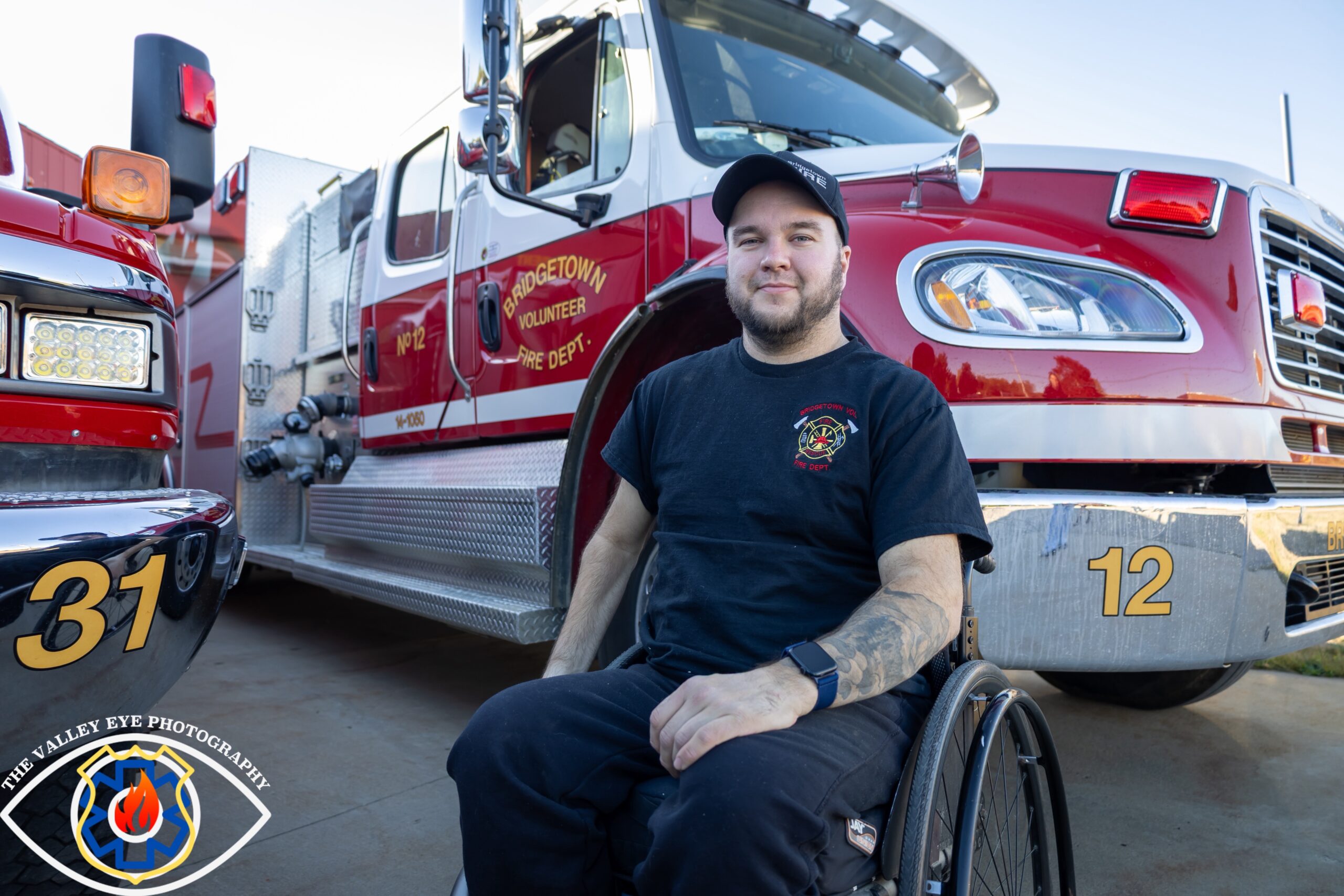
The role of an accountability officer is pretty straightforward. They ensure the safety of those on the fire grounds while knowing where they are. Chris was responsible for knowing how many crew were on board, keeping track of the fuel on the apparatus so they didn’t run out and keeping track of their location and current tasking.
“He took it to a whole different level. He had spreadsheets going, and he knew where everything was going. It was easy if I got lost or mixed up about where a fire truck was,” Chief Sheridan stated.
In many scenarios, Chris coordinated fuel deliveries, helping reassign apparatus and food delivery. His role ended up being extremely valuable.
Rice became a second set of ears and was a huge component to the swift working fire operations from the radio room.
Even the fuel delivery driver who supplied fuel was doing his part. Mark Wood, a former member of Bridgetown, was volunteering his time and truck to ensure fuel was at the ready for apparatus while attending the Long Lake Fire.
There aren’t many roads in West Dalhousie, but they had dozens of apparatus spread far, making it tricky for crews on the ground to know where each truck was placed.
After 16 days straight with only one day off in the middle, Chris poured out 216 hours doing accountability, undoubtedly playing a critical role.
On the ground, firefighters faced multiple challenges, especially on Sunday, August 24th, due to fire conditions.
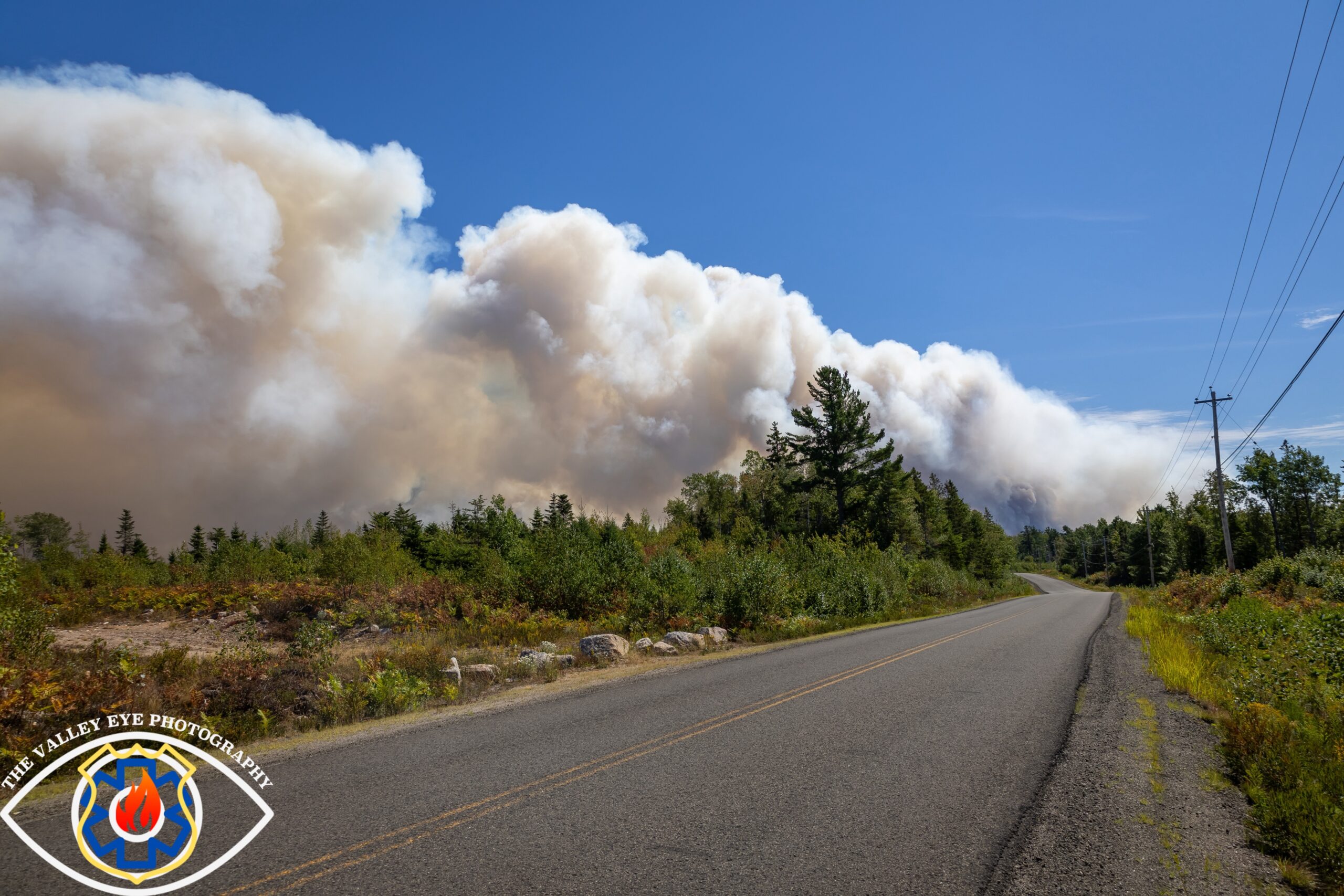
Sheridan and Oliver shared getting split up at one point. They were sharing roles while keeping tabs on crews on each side of the fire before it crossed West Dalhousie Road.
Communications were still going through to accountability, but they were unable to communicate with one another, due to how thick the smoke was.
Crews also patrolled along Highway 10 in various areas for spot fires as heavy ash was falling from the sky and because of the reduced visibility.
Oliver described their experience on Sunday as tactical retreats. They stayed in one area for as long as they could and moved to the next, slowly moving out of West Dalhousie the closer the fire got.
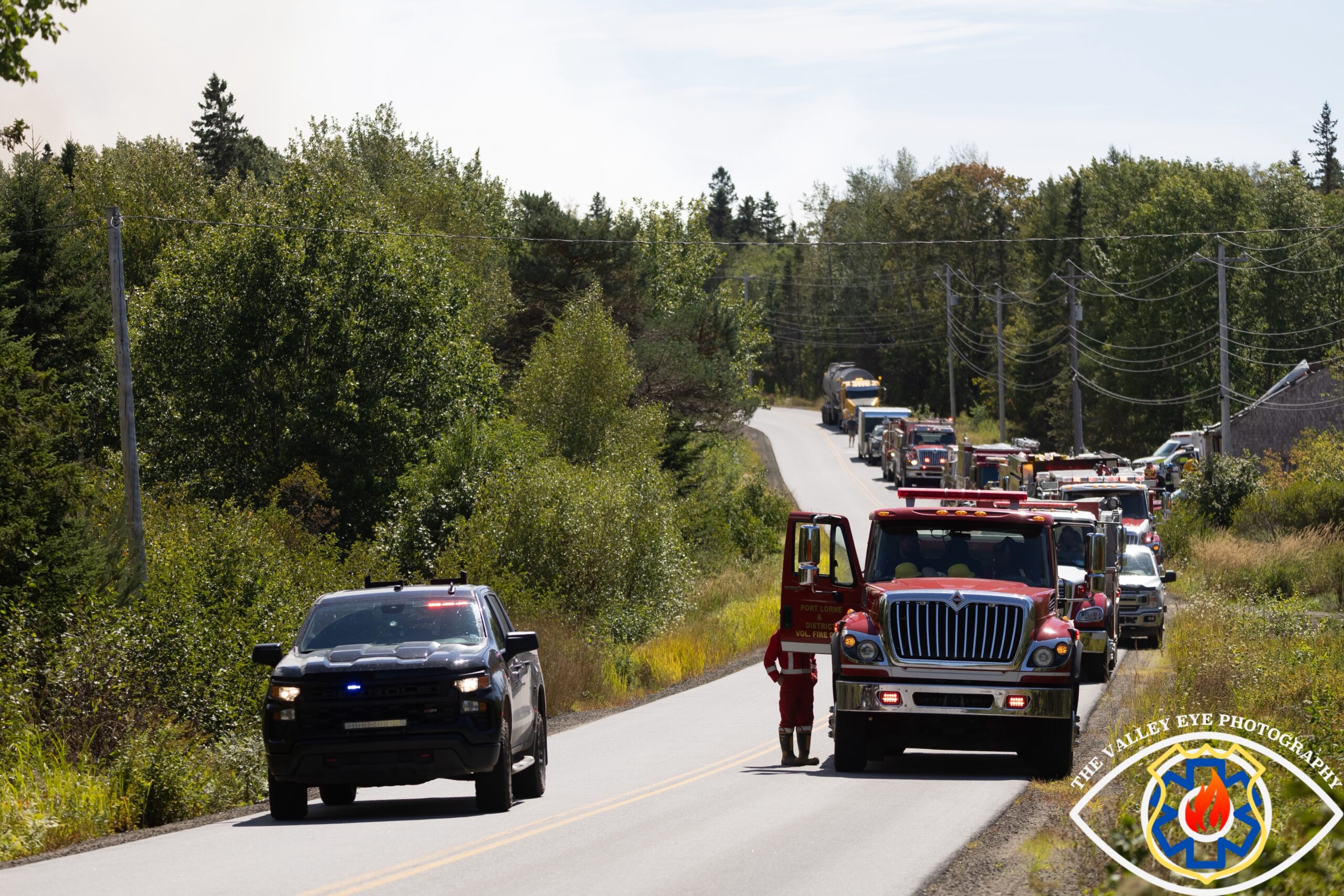
They ultimately stayed for as long as they could during explosive fire conditions on the 24th. It was eventually deemed unsafe for them to be there and relocated down to the Bridgetown Fire Station.
Lunches were scarce and brown paper bags with food were the limited option for the hard-working firefighters on the ground on August 24th.
“That day, there was a couple who had a wedding the day before. They had a lot of food left over and dropped it off. When the firefighters got the call to go back out, it was fast and everyone got fed,” stated Deputy Chief Robbie Brown.
Even though firefighters worked all day and evacuated down to Bridgetown, they all returned back after the fire had passed through to continue protecting outbuildings and various areas that could have threatened homes. The drop off of food from the newly weds made a huge difference when crews returned.
“I was amazed when we went back that Sunday night and seen how much was still standing after we evacuated, we didn’t expect much to be left.” Chief Sheridan shared.
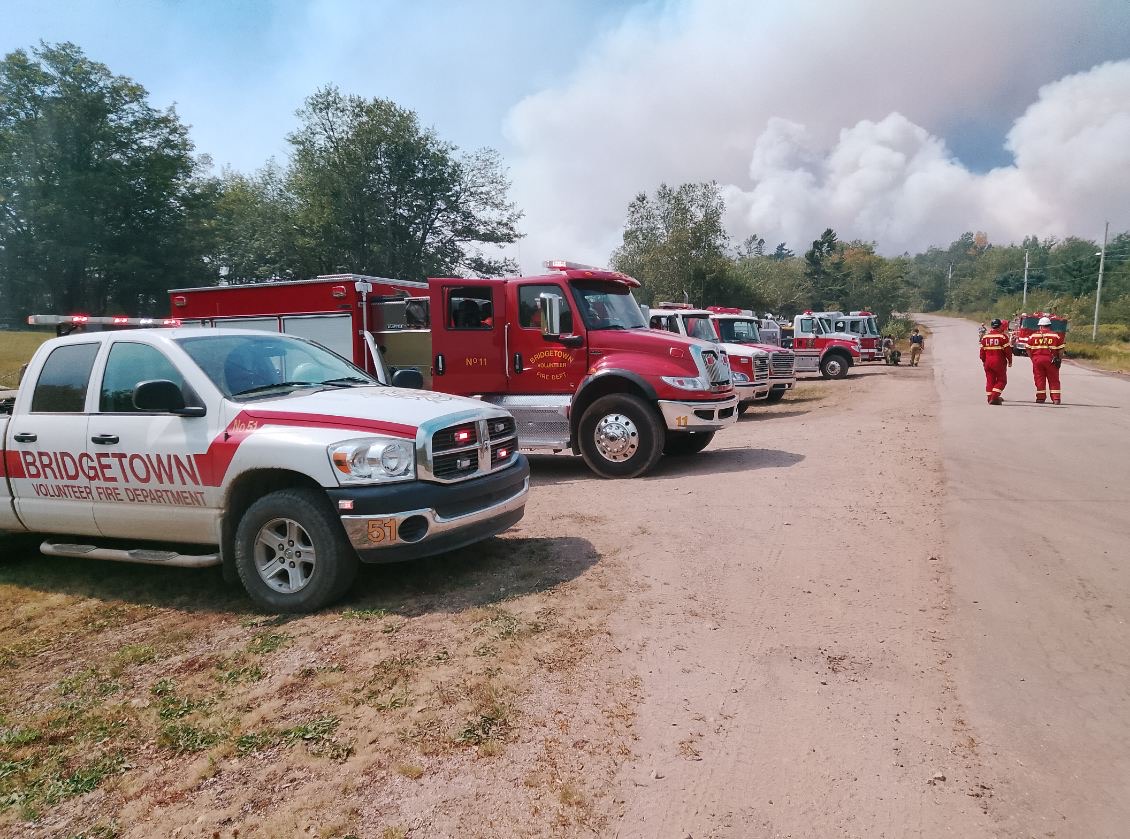
(Photo via Bridgetown Fire Department)
Returning and seeing what was left gave many of the frontline firefighters the strive to keep fighting. They saved the community centre and many homes. Their work payed off despite feeling devastated after having to evacuate.
With the sprinklers in place and the amount of homes that remained standing, it was unbelievable how many structures were saved even due to how dangerous the fire became on that very Sunday.
The efforts continued even days after, working to douse hotspots and protect homes with dozens of firefighters from across Western Nova Scotia assisting.
The amount of resources during peak times were all being utilized, focused on important assignments all around West Dalhousie. The support and resources were extremely grateful.
Not only does an incident like this need efforts on the ground but it also requires help behind the scenes. Bridgetown Deputy Chief, Robbie Brown ensured he did his part keeping on top of the books and having everything together at the station, while the other two white hats worked on scene.
Even during the Long Lake Wildfire, Bridgetown had numerous calls for MVAs and other fires ensuring they were still able to adequately serve their fire district.
Chief Sheridan with 33 years and Deputy Chief Olivier with 10 years have had their fair share of big calls, the support as a result of this incident was beyond amazing.
“It wasn’t just the people we called, we were getting different phone calls from different chiefs, different departments, offering up services. They were willing to come and do whatever they could to help, it was phenomenal the support that was given to us.” Chief Sheridan expressed.
The support was beyond incredible from the fire departments, residents in the community and surrounding communities and even across Nova Scotia.
“Honestly, thank you from the bottom of our hearts doesn’t even start to express the gratitude that we have for everyone. Like Randy said it was phenomenal right from the start. It was a huge operation, we tried to keep everyone safe, comfortable and fed.” DC Oliver added.
During the first two weeks of the fire before the incident command post was relocated evacuees who volunteer with the West Dalhousie Community Centre graciously cooked and fed firefighters, ultimately creating the culture and atmosphere that firefighters were being looked after.
After the command post was relocated Bridgetown Firefighters were responsible for doing lunch and supper runs to the volunteers that were on the grounds, driving out to each location and ensuring crews were fed. On average due to the how large the fire ground was and how spread out the crews were, the food run took in some cases 3 hours to complete.
The magnitude of the fire efforts are truly staggering. Those in the public truly don’t understand how organized and put together the whole operation was.
On Saturday Bridgetown Firefighters held a barbecue for their members, thanking the West Dalhousie Community Centre for providing meals while recognizing the commitment that loved ones had while at home keeping things under control while they were away.
“It takes a toll on what we’re dealing with out there but it also takes a toll on the families at home, they still have to operate and eat and all the things that go on at home.” Oliver expressed.
Even Sheridan giggled when he recalled falling asleep at the fire station after going non stop. The lights and door might have gotten shut and some photos might have been taken, all apart of being involved in a second family within the fire service.
From the numerous agencies, to the fellow fire departments, the plethora of donations that still take up space at the Bridgetown hall, children waving every morning when fire trucks were going to the fire grounds and the support via the Nova Scotia Firefighters 50/50, the Bridgetown Fire Department is beyond grateful for everyone’s support during this unprecedented wildfire.
We thank all those who spent days and days helping protect the West Dalhousie Community. Your efforts have made history and are nothing short of incredible.
“Our members, the mutual aid members, the agencies, the families, the donations that keep coming in, thank you.” Bridgetown Fire.
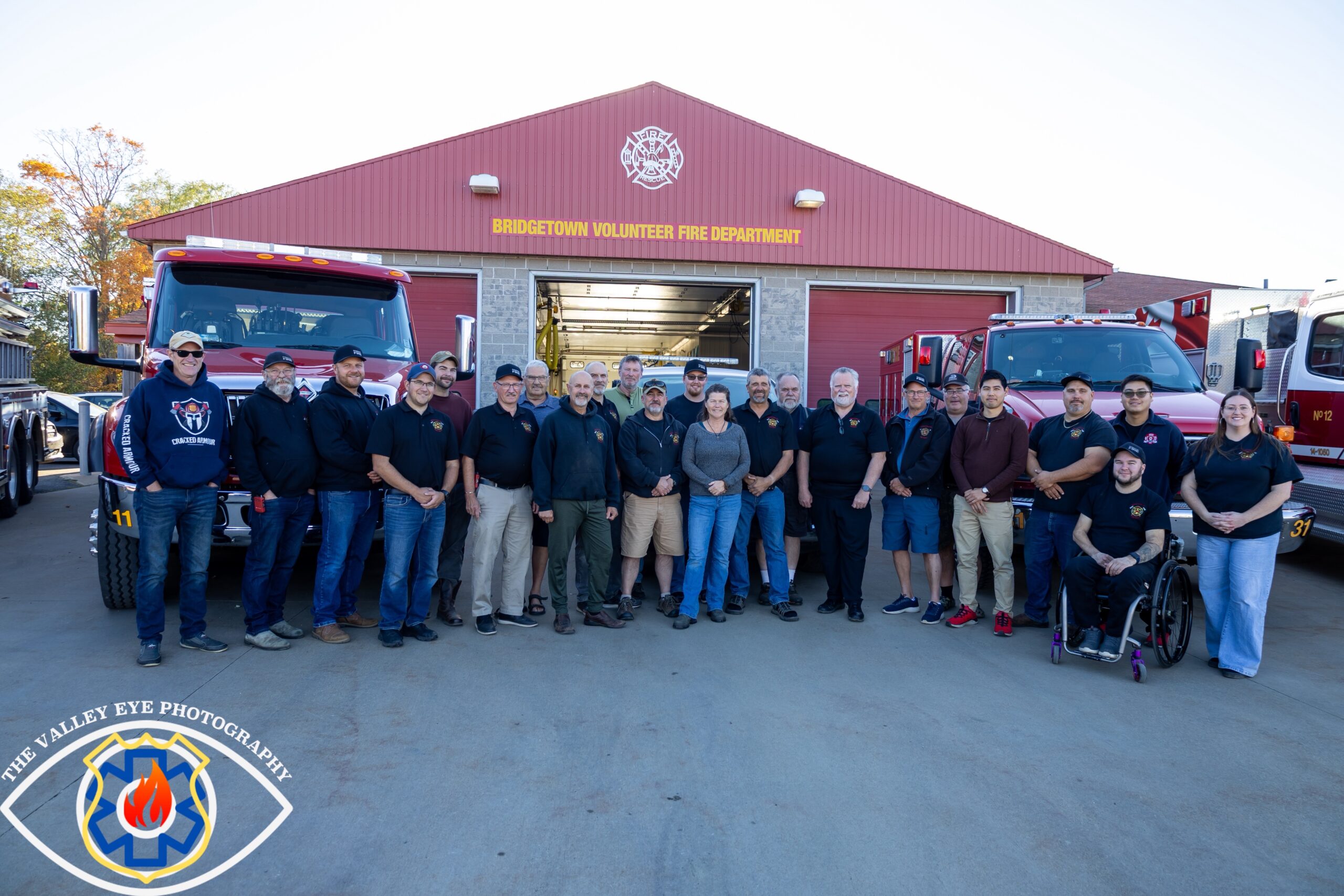
(Attached is a photo taken on Saturday, September 20th of the Bridgetown Firefighters outside their station)
Adrian J.

